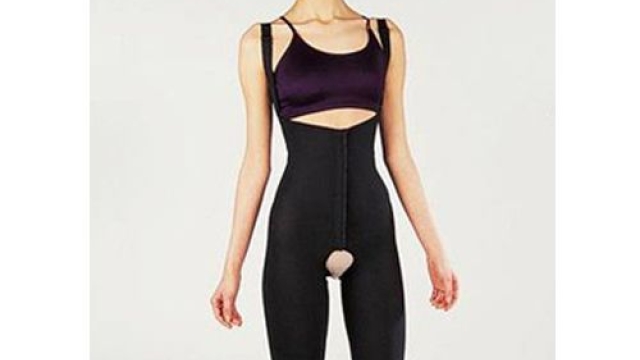Compression garments have long been a staple in the world of athletics and physical performance, but their benefits extend far beyond just speeding up recovery for athletes. Whether you have recently undergone liposuction or simply looking for ways to enhance your overall well-being, compression garments could be the answer you’ve been seeking. These garments, designed to fit snugly against the body, apply a controlled amount of pressure to specific areas, aiding in the reduction of swelling and inflammation. As a result, they promote better circulation, muscle support, and ultimately, improved performance and recovery.
One of the noteworthy applications of compression garments is their use after liposuction procedures. Following such surgeries, the body undergoes a significant amount of trauma and tissue damage. This can lead to swelling, discomfort, and a longer recovery time. However, wearing a compression garment post-lipo can significantly minimize these effects. By applying constant pressure to the treated areas, these garments help reduce swelling and promote the natural healing process. Additionally, they provide support to the surrounding muscles, helping to maintain a proper shape and contour while the body adjusts to its new form.
It’s worth noting that compression garments are not limited to post-surgical use. Athletes from various disciplines have long relied on them to enhance performance and aid in recovery. The compression provided by these garments helps to improve blood flow, bringing oxygen and nutrients to the muscles more efficiently. With improved circulation, muscles can obtain the necessary resources for optimal performance while also flushing out waste products that can cause fatigue and soreness. Whether it’s during intense training sessions or races, compression garments have become a valuable tool in an athlete’s arsenal, allowing them to push their limits and perform at their best.
In conclusion, compression garments have shown immense potential in unlocking the power of enhanced performance and recovery. From aiding in post-liposuction healing to supporting athletes during intense physical activities, they have proven to be more than just a simple piece of clothing. By applying targeted pressure, these garments offer benefits such as reducing swelling, improving circulation, and supporting muscles. So whether you’re recovering from surgery or striving to elevate your athletic abilities, consider harnessing the power of compression garments to reach your goals.
Benefits of Using Compression Garments after Liposuction
Using compression garments after undergoing liposuction surgery offers several significant benefits for the recovery process. These garments provide gentle yet effective pressure to the treated areas, promoting proper healing and minimizing swelling. By applying consistent compression, these garments help to sculpt the body, ensuring that the desired results of the procedure are achieved. Additionally, compression garments enhance blood circulation, which aids in reducing bruising and discomfort following the surgery.

Choosing the Right Compression Garment
When it comes to selecting a compression garment, there are a few key factors to consider. First and foremost, it is crucial to choose a garment that is specifically designed for post-liposuction recovery. These garments are specially made to provide the right level of compression and support to aid in the healing process.
Additionally, it is important to ensure that the compression garment you select fits properly. A properly fitting garment will provide optimal compression and support, allowing for maximum comfort and effectiveness. Take accurate measurements of your body and refer to the sizing charts provided by the manufacturer to ensure the best fit.
Furthermore, the material of the compression garment should also be taken into consideration. Look for garments that are made from breathable and moisture-wicking fabrics. These materials will help to keep you cool and comfortable during the recovery period while also allowing for proper airflow to promote healing.
Overall, selecting the right compression garment is essential for enhancing both performance and recovery after liposuction. By choosing a garment specifically designed for post-lipo use, ensuring a proper fit, and selecting materials that prioritize comfort and breathability, you can unlock the full power of compression and optimize your healing process.
Best Practices for Wearing Compression Garments
Properly wearing compression garments is key to maximizing their effectiveness and promoting post-liposuction recovery. Here are some best practices to consider:
-
Gradually Increase Wear Time: It is advisable to start wearing a compression garment immediately after lipo surgery, as recommended by your surgeon. Begin with short durations, such as a few hours at a time, and slowly increase the wear time as your body adjusts. This gradual progression helps prevent discomfort and allows your body to adapt to the compression.
-
Follow the Size and Fit Guidelines: Ensure that you choose a compression garment that fits you properly, following the size guidelines provided by the manufacturer. A snug but comfortable fit is essential for achieving optimal compression. Avoid garments that are too tight, as they may constrict blood flow, or too loose, as they won’t provide the necessary support.
-
Maintain Proper Hygiene: Keeping your compression garment clean is crucial to prevent infections and promote healing. Follow the specific care instructions provided by the manufacturer to maintain hygiene standards. Generally, hand washing with a mild soap and air drying is recommended. It’s also a good idea to have a spare compression garment to rotate while cleaning.
By adhering to these best practices, you can make the most of your compression garment after lipo surgery. Remember to always consult with your surgeon for specific instructions pertaining to your individual case, as they are best equipped to provide personalized guidance.


